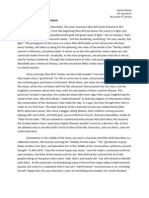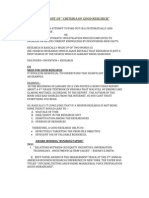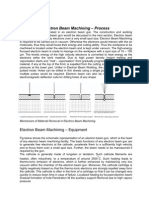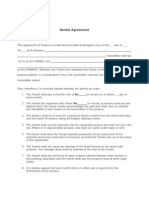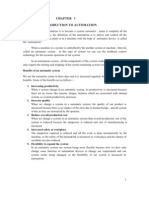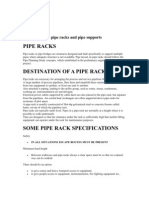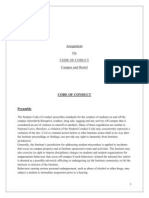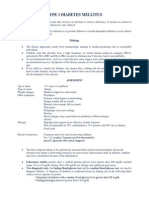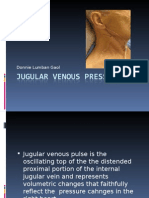Assignment-1 Specification Standards For DM
Uploaded by
Satish BabuAssignment-1 Specification Standards For DM
Uploaded by
Satish BabuPerformance standards for dental materials
History:
600-300 BC restorative dentistry appeared Christian era: Gold shells Fixed bridges Partial and full dentures Mid. Ages-1800s: Extractions and artificial replacement 1700 : ivory used to construct complete dentures. Porcelain teeth first fabricated and used. 1844: vulcanite (rubber material) used for denture base construction and remained so until WWII 659-1800: silver pastes first introduced by Chinese then French 1846: amalgam banned due to health hazard of mercury 1855: gold foil used in restorative dentistry Late 1800 zinc phosphate 1874: fluorides 1895: G.V. Black introduced an acceptable amalgam formula 1907: casting method for gold inlays developed 1932: synthetic resins developed then replaced vulcanite in making dentures and as esthetic restorative material 1955: acid etching technique introduced 1945: water fluoridation 1960s: composite resins as esthetic material 1970s: glass ionomer cements 1980s: dentine bonding agents, resin modified-GIC 1990s: compomers
Performance standards for dental materials
y Evaluation of dental materials
.
The study of dental materials takes into consideration certain standards set forth to evaluate a material or a technique before it is used in the patients mouth. Main organizations are
American Dental Association (ADA) National institute of standards and technology[NIST] Food and Drug Administration (FDA) International Standards Organization (ISO) Federation Dentaire Internationale (FDI)
*FDI and ISO establish standards for DM on an international level* ISO-TC, ISO TC 106 is for Dentistry AIMS:
Evaluation of composition, properties of various dental materials. Selection criteria for dental materials, to protect the patients from various biohazard materials.
Standards for dental materials;
In 1919, US army requested the national bureau of standards(now known as National Institute of Standards and Technology) to set up specifications for evaluation and selection of dental amalgams for use in federal service. In 1928, the dental research fellowship an national bureau of standards was assumed by the American Dental Association(ADA). American Dental Association (ADA)
1930 ADA established guidelines for testing products and awarded the first ADA Seal of Acceptance in 1931. ADA staff review dental materials, drugs, instruments, equipments ADA Council on Scientific Affairs is responsible for formulating standards for physical, mechanical and chemical properties of dental materials to ensure their quality Qualifying for ADA seal of acceptance Takes 3 months to be awarded Lasts for 5 years then reevaluated. Manufacturer maybe required to submit new reports and study results
Performance standards for dental materials
Provisional acceptance: Awarded to products that lack sufficient evidence to justify acceptance, but there is reasonable evidence of safety. Approval is reviewed yearly up to 3 years
When applying for the ADA seal manufacturer should:
Supply objective data from clinical, lab studies supporting product safety Conduct clinical trials Provide evidence of properly supervised and adequate manufacturing and lab facilities Submit promotional & Patient education material for review
Submit patient information, ingredient list for review U.S Food and Drug Administration regulations:
It is a regulatory authority to protect the public from hazardous or infective medical and
dental devices. Dental materials and over the counter products are subject to control and regulation by the FDA Center for Devices and Radiological Health Classifies items according to their hazards or problems into class I, II, III Class 1: considered as low risk Class 2: products in this class are required to meet performance standards. Class 3: most stringent category, requires that
Devices be approved for safety and effectiveness before they are marketed All implanted or life supporting devices are placed in the pre-market clearance category.
Federation dentaire international(FDI)
FDI initiated and actively supported a program for the formulation of international specifications for dental materials. It request to ISO that they consider FDI specifications for dental materials as ISO standards led to the ISO technical committee(TC), TC106- Dentistry
International Standards Organization (ISO)
3
Performance standards for dental materials
Composed of national standards organization from more than 80 countries ISO Technical committee (ISO-TC): To standardize terminology and test methods and also develop standards for different dental materials In 2002, the international organization for standardization had 224 TCs(technical committees) for testing safety and efficacy of dental products.
A total of 134 ISO dental standards have been published related TC and it SC s(subcommittees) and working groups(WG s). Example: TC 106/SC1: filling and restorative materials TC 107/SC2: prosthodontic materials
How are ISO standards developed? Input information come from: Manufacturers Users Consumer groups Dentists Laboratories Research organizations Other dental standards organizations
Australian Dental Standards Laboratory Scandinavian Institute of Dental Materials European Economic Community (CEN) Nordisk institute for odontologisk material proving (NIOM).
You might also like
- CCCCCCCCCCCCCCCCCC CCCC C CCC C: C C CC CCCCCCC CC CCCCC CCCCCC CCCNo ratings yetCCCCCCCCCCCCCCCCCC CCCC C CCC C: C C CC CCCCCCC CC CCCCC CCCCCC CCC16 pages
- C CCCC C CCCCCCCCCC CCCCCCCCCCCCCCCC C: CC CCCCCCCC C CCC CCC C CCNo ratings yetC CCCC C CCCCCCCCCC CCCCCCCCCCCCCCCC C: CC CCCCCCCC C CCC CCC C CC8 pages
- $CCCCC CCCC C C 0#1" CC (23cccccc (42! (45ccc CC C CC CCCCCCCCNo ratings yet$CCCCC CCCC C C 0#1" CC (23cccccc (42! (45ccc CC C CC CCCCCCCC2 pages
- Mintzberg Defined Organizational Structure As50% (2)Mintzberg Defined Organizational Structure As7 pages
- C CC C CC Ã C C C CCC CCCC CCCCCC CC: C CC CCCCCCCCCCCCC CC C CC CCCCCCCCC CCC CCCCCCCCCC CCCCC CC C CNo ratings yetC CC C CC Ã C C C CCC CCCC CCCCCC CC: C CC CCCCCCCCCCCCC CC C CC CCCCCCCCC CCC CCCCCCCCCC CCCCC CC C C2 pages
- C CC C CCCCCCCCCCCCCCCCCC CCC C CCCCC C CC CCNo ratings yetC CC C CCCCCCCCCCCCCCCCCC CCC C CCCCC C CC CC14 pages
- Introduction To Pipe Racks and Pipe SupportsNo ratings yetIntroduction To Pipe Racks and Pipe Supports3 pages
- Codex Alimentarius Commission: Procedural Manual Twenty-Sixth EditionFrom EverandCodex Alimentarius Commission: Procedural Manual Twenty-Sixth EditionNo ratings yet
- Delta Checks For Random Error Detection in Hematology Tests100% (1)Delta Checks For Random Error Detection in Hematology Tests8 pages
- 2024 LO MARKING GUIDELINES FOR PROJECT TERM 2No ratings yet2024 LO MARKING GUIDELINES FOR PROJECT TERM 211 pages
- Tetralogy of Fallot Everything You Wanted To Know But Were Afraid To AskNo ratings yetTetralogy of Fallot Everything You Wanted To Know But Were Afraid To Ask8 pages
- Immediate download Test Bank for Linne and Ringsrud Clinical Laboratory Science 7th Edition by Turgeon all chapters100% (29)Immediate download Test Bank for Linne and Ringsrud Clinical Laboratory Science 7th Edition by Turgeon all chapters17 pages
- Journal of Water Process Engineering: SciencedirectNo ratings yetJournal of Water Process Engineering: Sciencedirect11 pages
- PDF Paediatric Neurology in Clinical General Practice Common Neurological Problems in General Pediatrics 1st Edition Richard E. Appleton Download100% (4)PDF Paediatric Neurology in Clinical General Practice Common Neurological Problems in General Pediatrics 1st Edition Richard E. Appleton Download84 pages
- SOP For Minimizing BSE Risks Associated With Specified Risk MaterialsNo ratings yetSOP For Minimizing BSE Risks Associated With Specified Risk Materials4 pages
- CE11. CLIA-Efficacy of CLIA On VCA-IgA and EBNA1-IgA Antibodies of EB Virus in Diagnosing Nasopharyngeal CarcinomaNo ratings yetCE11. CLIA-Efficacy of CLIA On VCA-IgA and EBNA1-IgA Antibodies of EB Virus in Diagnosing Nasopharyngeal Carcinoma8 pages
- Flow Cytometry, The Next Step in Diagnostic TestingNo ratings yetFlow Cytometry, The Next Step in Diagnostic Testing4 pages
- Symbol Name Current Price 1 Month % CHG 3 Month % CHG 6 Month % CHG 1 Year % CHGNo ratings yetSymbol Name Current Price 1 Month % CHG 3 Month % CHG 6 Month % CHG 1 Year % CHG12 pages
- Download full Test Bank for Introduction to Radiologic Sciences and Patient Care, 4th Edition: Adler all chapters100% (10)Download full Test Bank for Introduction to Radiologic Sciences and Patient Care, 4th Edition: Adler all chapters41 pages

